This post may contain paid links. See more info on my privacy page.
Learn how to make turkey gravy from turkey drippings or from scratch following my easy Homemade Turkey Gravy recipe! Simple ingredients make this a flavorful gravy for everything from turkey to vegetables. Every bite is worth savoring! Ready in under 15 minutes using 3 easy ingredients.
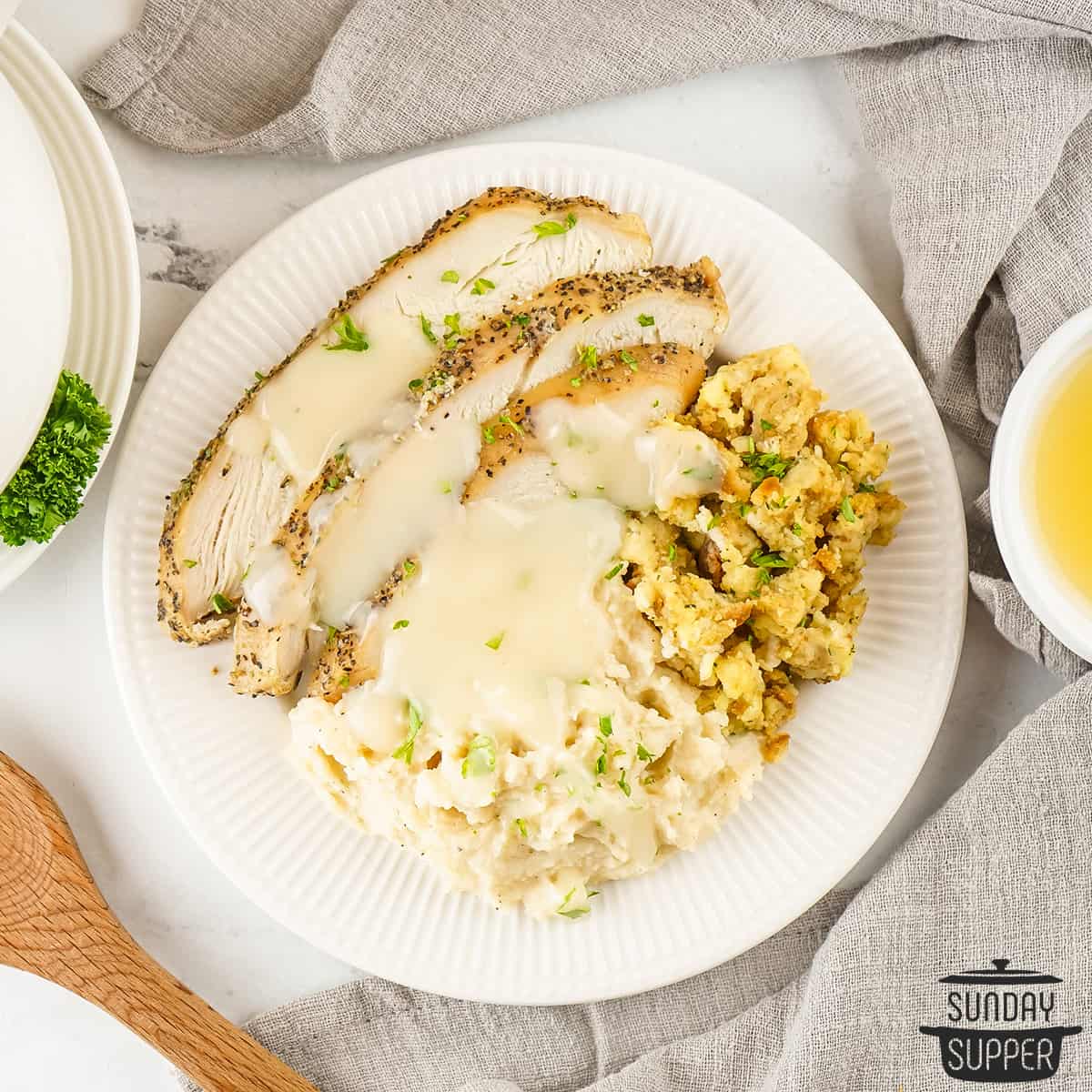
Jump to:
Turkey Gravy from Scratch
Every year when I make a turkey for the holidays, I save the pan drippings to make this incredible turkey gravy recipe. Armed with drippings, it only takes 3 ingredients to make a gravy so mouthwatering, you'll be fighting over the last few drops!
You will want to drizzle this gravy over everything from the turkey to mashed potatoes, carrots, rolls, and stuffing. By using drippings, it soaks up all the best flavors of the turkey seasoning and stuffing, and becomes creamy, decadent, and the best part of the meal.
Of course, sometimes you need more gravy than you can make with drippings, or just want delicious gravy without needing to roast a whole bird! Never fear- I've included my trick for turkey gravy that tastes just as good, without drippings!
No Drippings? No Problem!
Gravy is always at its best with drippings, but if you don't have any, I've included ingredients for turkey gravy without drippings, too! With just a few more ingredients to capture the flavor, you can make delicious gravy without needing to roast a whole turkey too.
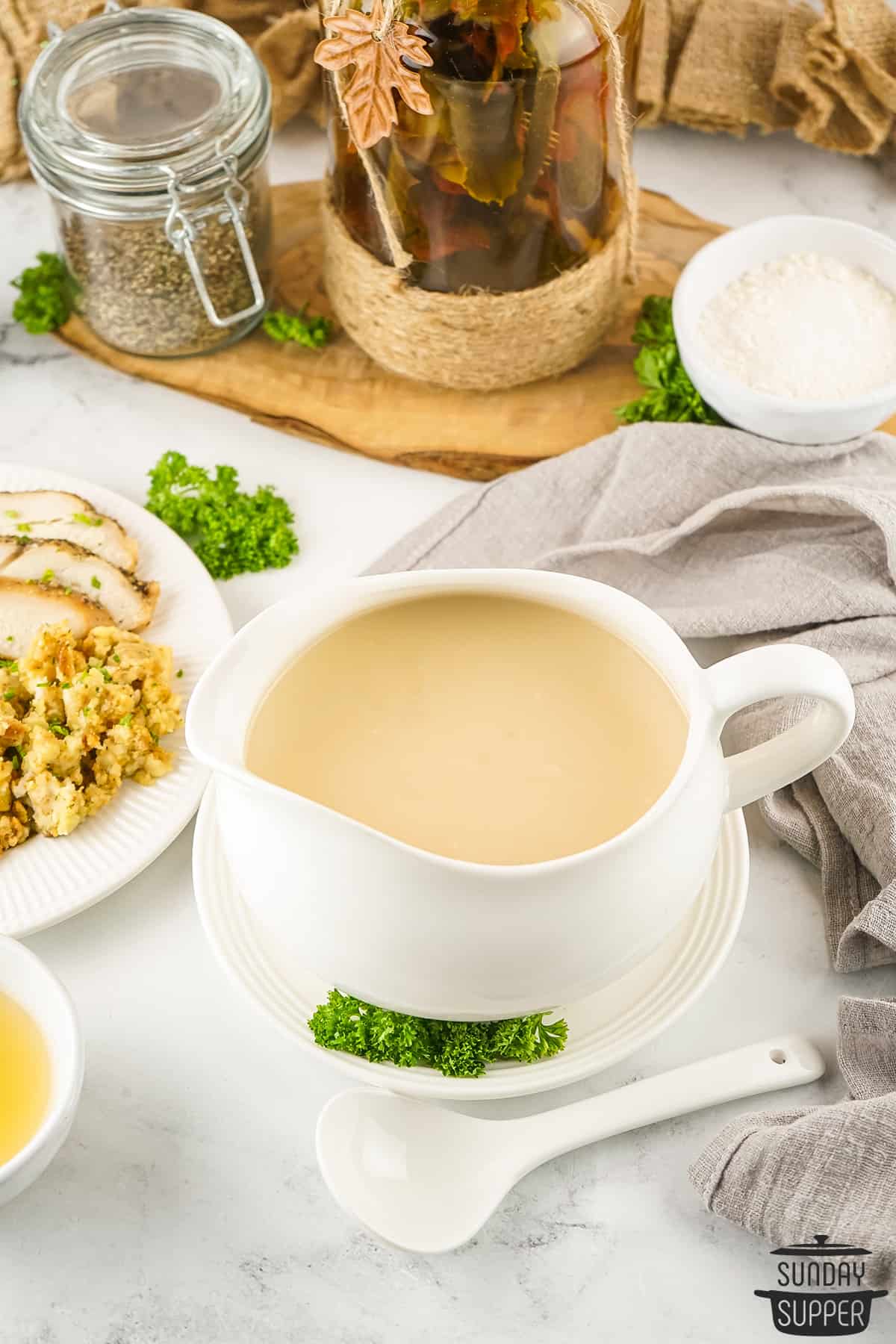
Easy Turkey Gravy Ingredients
Turkey Gravy with Drippings
- Turkey drippings: The star of the show! Save all the drippings from your Thanksgiving turkey; they add unbelievable flavor to gravy.
- All-purpose flour: Flour makes for an easy roux when combined with the drippings, which have plenty of fat to take the place of butter! You can also use gluten free flour for an easy gluten free gravy recipe.
- Turkey stock: If you don't have turkey stock, use chicken stock. It'll taste great either way!
- Parsley (optional)
Turkey Gravy without Drippings
- Turkey stock: Once again, you can use chicken stock, too!
- Butter: No drippings means no turkey fat, so you'll need butter to make the roux.
- Flour: A bit of flour will thicken the gravy beautifully.
- Shallot: Shallot or sweet onion will help add that stuffed-turkey flavor.
- Garlic: Garlic is often applied to the seasonings on a turkey, so we'll add it to the gravy to bring in some of that flavor.
- Fresh Sage: The magic ingredient for homemade turkey gravy is fresh herbs! Sage has a distinctive flavor classically paired with poultry.
- Fresh Rosemary: Often used to stuff turkey or ground up to season the skin, a little rosemary goes a long way.
- Fresh Thyme: A turkey stuffing classic! Make sure to include it. These fresh herbs take this recipe from a basic chicken gravy to a decadent turkey gravy!
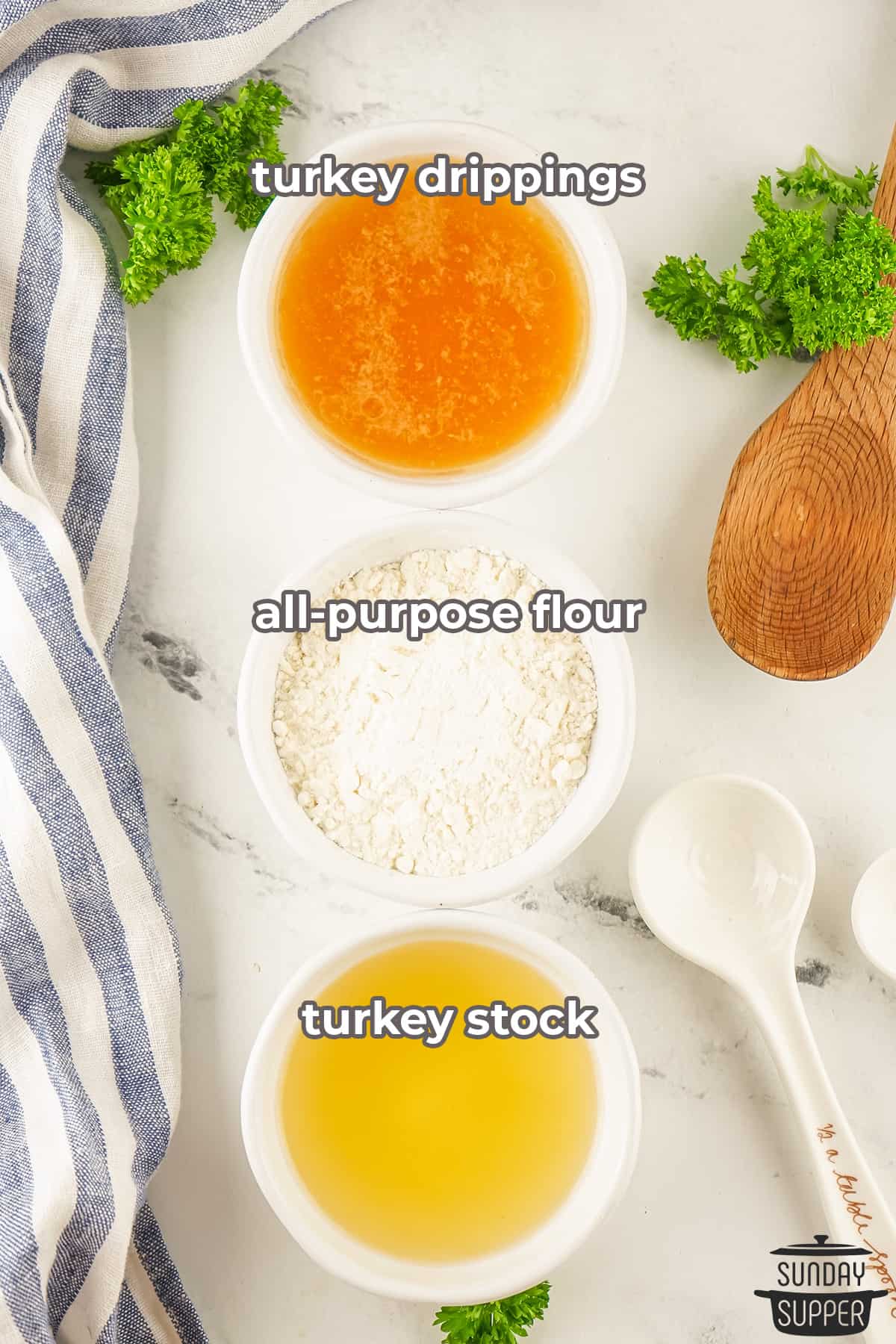
How to Make Gravy with Turkey Drippings
- Set a medium saucepan over medium-low heat on the stove and add turkey drippings. Heat until heated through, but not boiling.
- Once the drippings are heated, add flour. Mix until combined and thick.
- Pour in the stock while stirring. Let the mixture heat for a couple more minutes until it starts to thicken, continuing to stir.
- Turn off the heat and remove from the burner once combined and nearly thickened. Taste and carefully adjust with salt and pepper, if necessary. Sprinkle with parsley (optional) when serving, and enjoy!
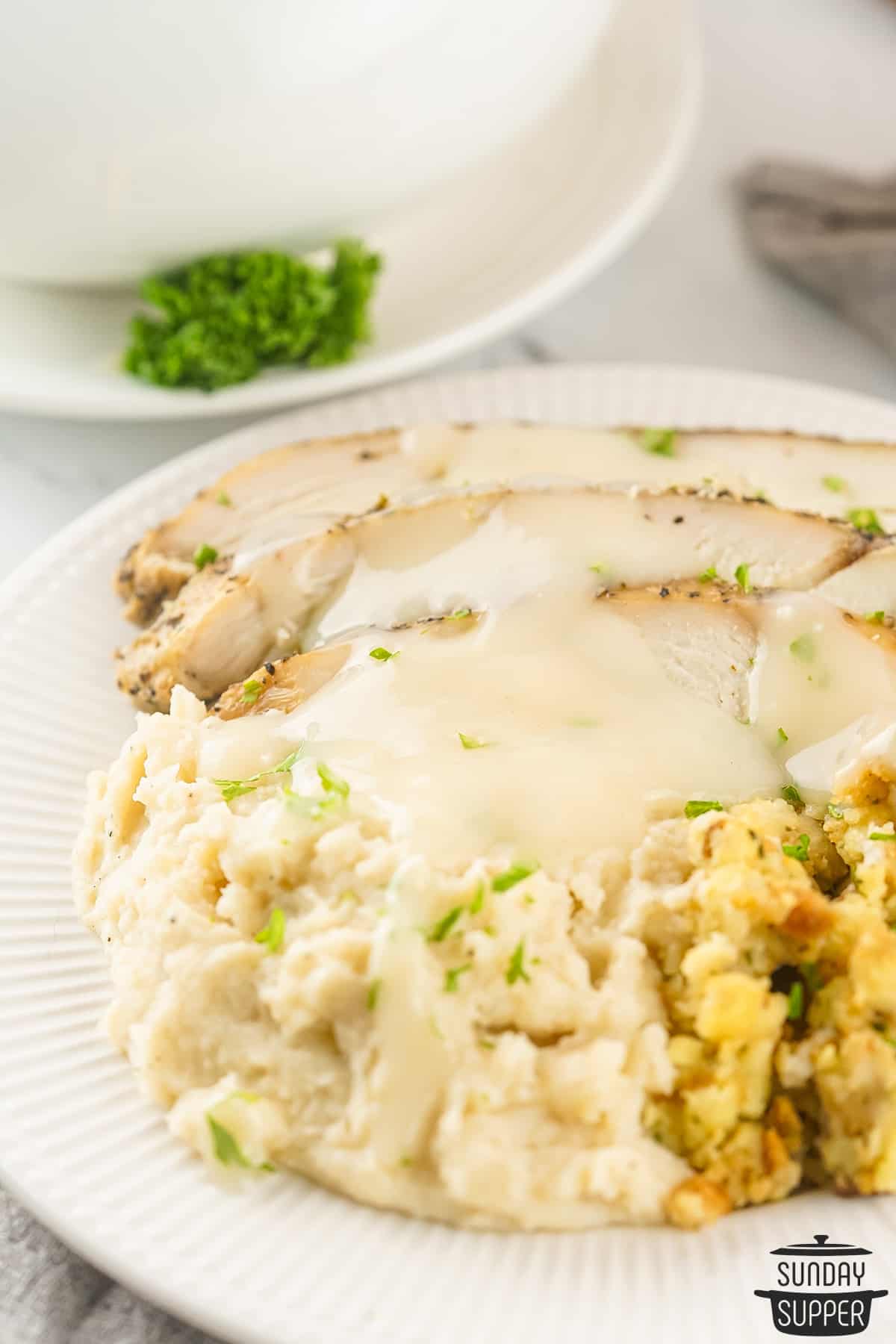
How to Make Turkey Gravy Without Drippings
- In a saucepan over medium heat, add the butter and let it melt entirely. Then add the flour, and stir until it forms a thick roux.
- Finely mince the shallot, garlic, and fresh herbs, and add them all to the pan, stirring until softened and aromatic.
- Add in the broth, and whisk until bubbly and thickened to your liking. You can add more broth to thin it as desired.
- Remove from the heat, and serve hot!
Tips for Making Turkey Gravy from Scratch
- For gluten-free turkey gravy, you can use cornstarch or a gluten free flour blend in place of flour.
- For added flavor, you can mix in thyme, parsley, or any other fresh herbs you enjoy. But if your drippings are especially flavorful, you may prefer it without any added herbs.
- Your turkey drippings will already be seasoned and the stock will already have salt, unless you use low sodium stock. Don't season until after you taste the gravy!
- If you’re having trouble getting rid of flour clumps, use the back of a spoon to flatten and mix them in. You can also add the flour to a jar with a lid and pour in a half cup of drippings or broth, then shake it rapidly until well mixed. This helps keep lumps from forming.
- For the best results, it’s important the flour completely dissolves in the drippings before adding stock.
- It’s important to remove the gravy before it fully thickens as it will continue to cook a bit once removed from the stove.
- It’s important to keep stirring once you add the stock or it will begin congealing on the top.
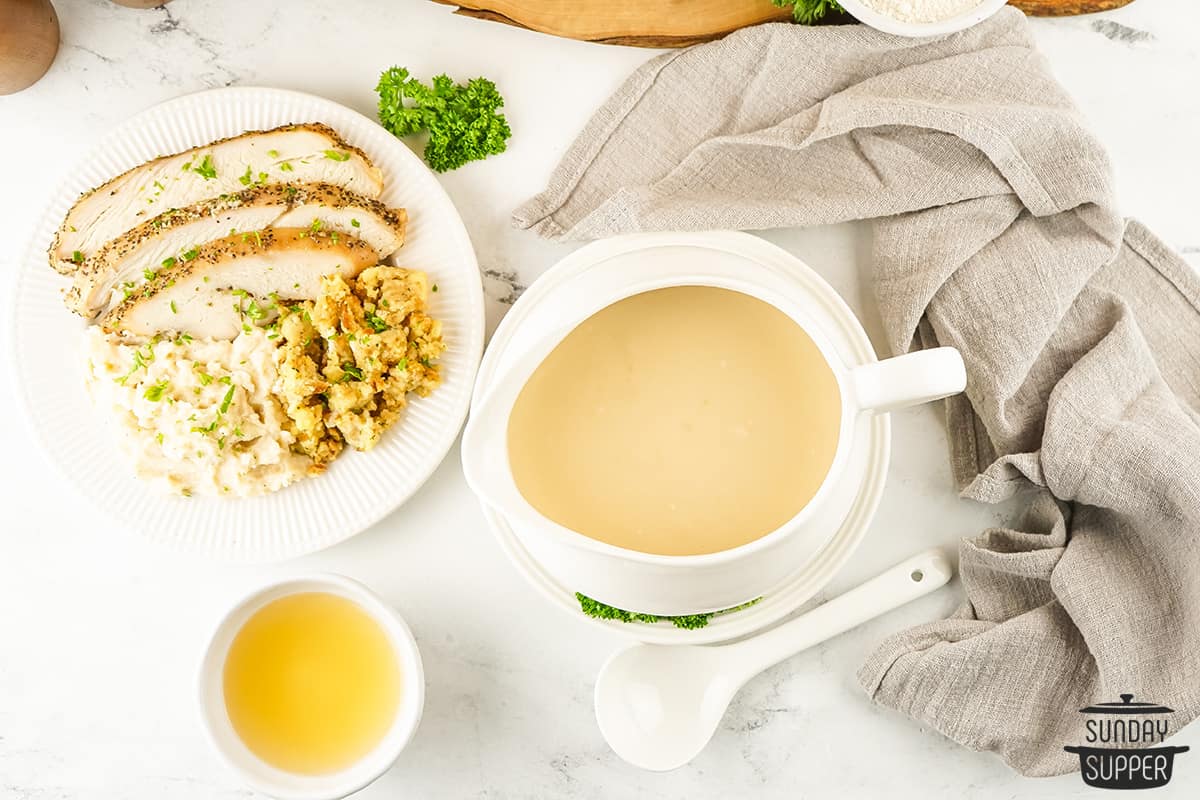
FAQ
Gravy using cornstarch thins out when it is refrigerated, and does not reheat as well as gravy using flour. For this reason, turkey gravy tends to be better and easier to control the consistency of when using flour as a thickener. Gluten free flour works just as well, so you can make delicious gravy for gluten free loved ones too!
If you don't have turkey drippings, you can make a roux with 4 Tablespoons of butter and flour, then add in a chopped shallot, 2 cloves minced garlic, and 2 teaspoons each fresh sage, rosemary, and thyme. The main difference between gravy with drippings and without is the seasonings and fat, so adding butter and herbs can make a big difference!
What to Serve with Turkey Gravy
- Best Turkey Recipes
- Cajun Turkey
- Creamy Mashed Potatoes
- Instant Pot Stuffing with Sage Sausage
- Air Fryer Biscuits
- And of course, my favorite Leftover Turkey Recipes!
Did you try this recipe? Leave a comment and a rating below to let us know what you think! We love to hear from you!

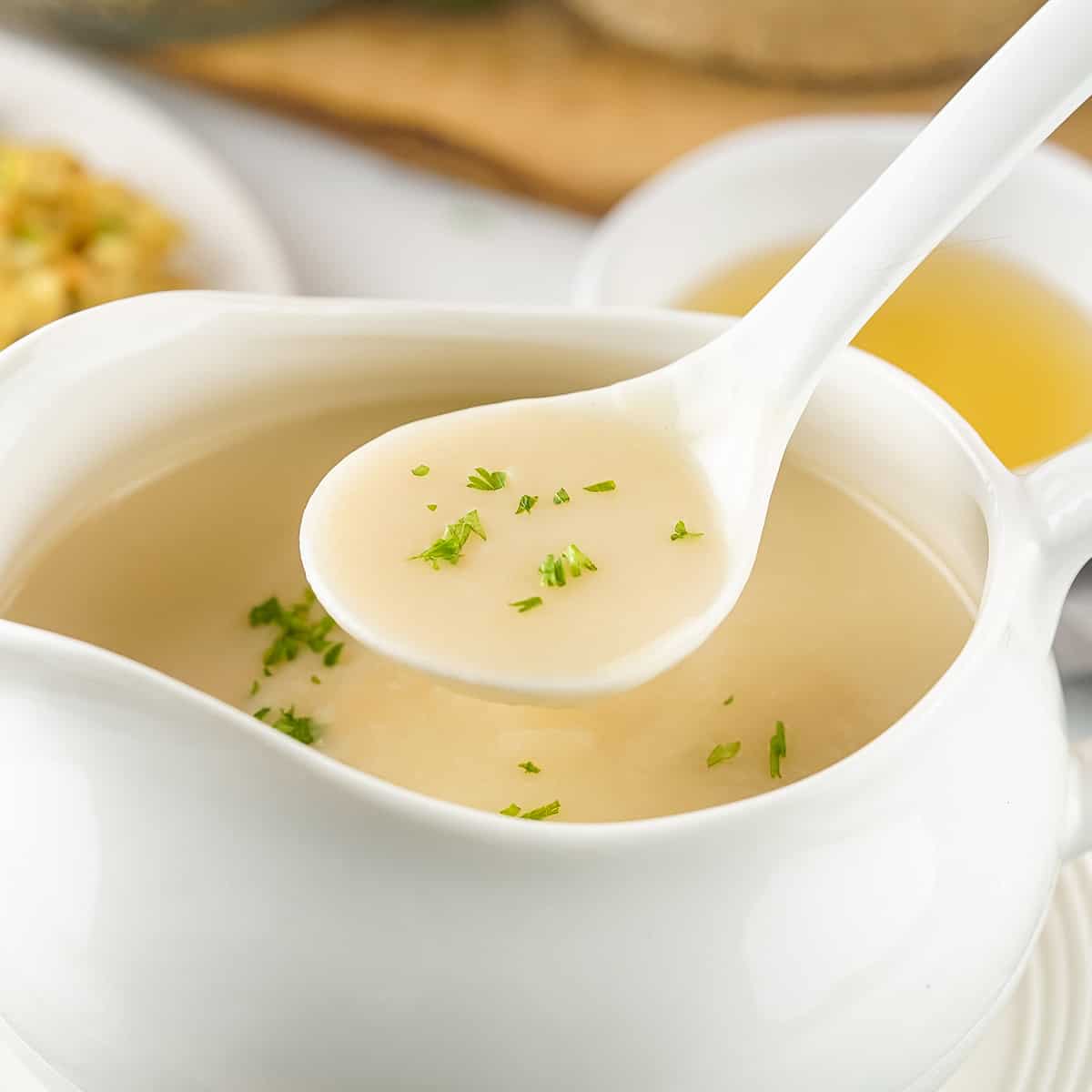
Homemade Turkey Gravy
Video
Equipment
- 1 Skillet or Saucepan
Ingredients
Turkey Gravy with Drippings
- 4 Cups Turkey Stock - or chicken broth
- ¼ Cup Turkey Drippings
- ¼ Cup All Purpose Flour
- Salt & Pepper - to taste
- Fresh Parsley - to taste, optional
Turkey Gravy without Drippings
- 4 cups Turkey Stock - or chicken broth
- 4 Tablespoons butter
- ¼ cup All Purpose Flour
- ½ Shallot - finely minced
- 2 cloves Garlic - finely minced
- 2 teaspoons Sage - finely minced
- 2 teaspoons Rosemary - finely minced
- 2 teaspoons Thyme - finely minced
Instructions
Turkey Gravy with Drippings
- Set a medium saucepan over medium-low heat on the stove and add turkey drippings. Heat until heated through, but not boiling.¼ Cup Turkey Drippings
- Once the drippings are heated, add flour. Mix until combined and thick.¼ Cup All Purpose Flour
- Pour in the stock while stirring. Let the mixture heat for a couple more minutes until it starts to thicken, continuing to stir.4 Cups Turkey Stock
- Turn off the heat and remove from the burner once combined and nearly thickened. Taste and carefully adjust with salt and pepper, if necessary. Sprinkle with parsley (optional) when serving, and enjoy!Salt & Pepper,Fresh Parsley
Turkey Gravy Without Drippings
- Melt the butter in a saucepan over medium heat, then add the flour and stir until thick and bubbly.4 Tablespoons butter,¼ cup All Purpose Flour
- Add in the shallots, herbs, and garlic, and heat until aromatic.½ Shallot,2 cloves Garlic,2 teaspoons Sage,2 teaspoons Rosemary,2 teaspoons Thyme
- Slowly pour in the broth, whisking constantly to ensure no lumps remain.4 cups Turkey Stock
- Once hot, bubbly, and completely smooth, remove from the heat and serve!
Notes
- You can make turkey gravy without pan drippings - just replace the drippings with 4 Tablespoons butter (unsalted or salted).
- For gluten-free turkey gravy, you can use cornstarch in place of flour.
- For added flavor, you can mix in thyme, parsley, or any other fresh herbs you enjoy. But if your drippings are especially flavorful, you may prefer it without any added herbs.
- Your turkey drippings will already be seasoned and the stock will already have salt, unless you use low sodium stock. Don't season until after you taste the gravy!
- If you’re having trouble getting rid of flour clumps, use the back of a spoon to flatten and mix them in.
- For the best results, it’s important the flour completely dissolves in the drippings before adding stock.
- It’s important to remove the gravy before it fully thickens as it will continue to cook a bit once removed from the stove.
- It’s important to keep stirring once you add the stock or it will begin congealing on the top.



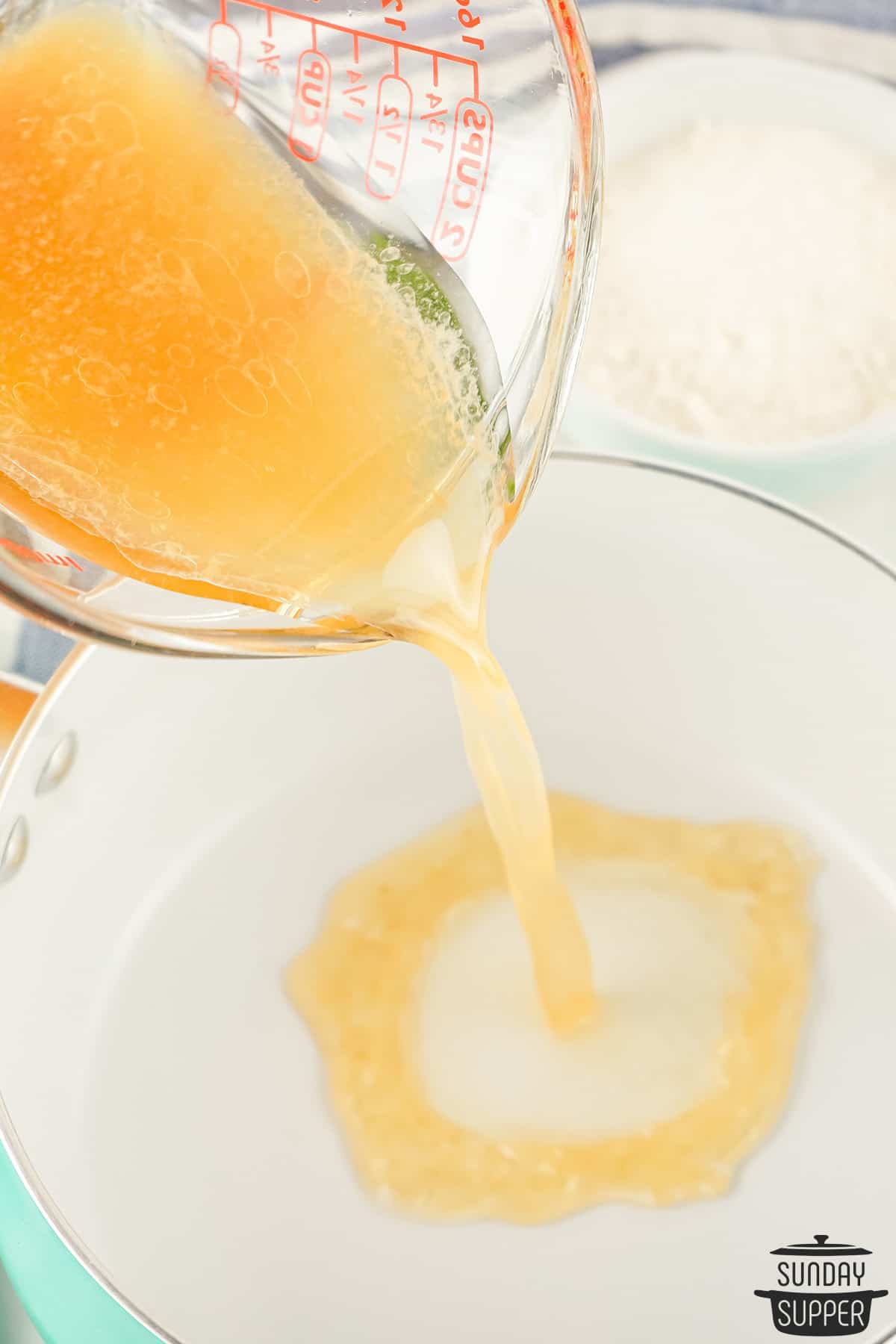
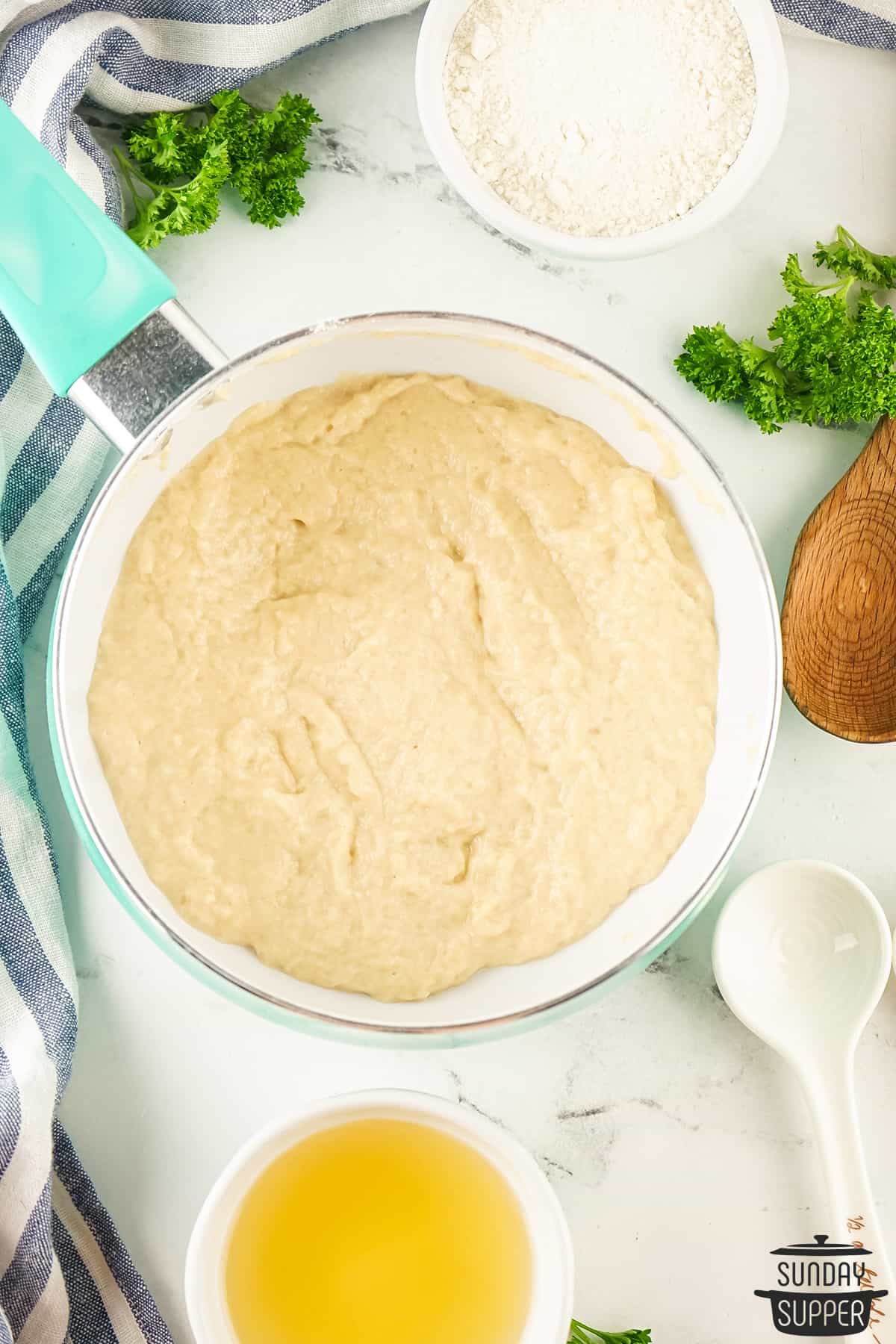


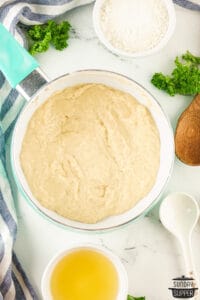


Comments
No Comments